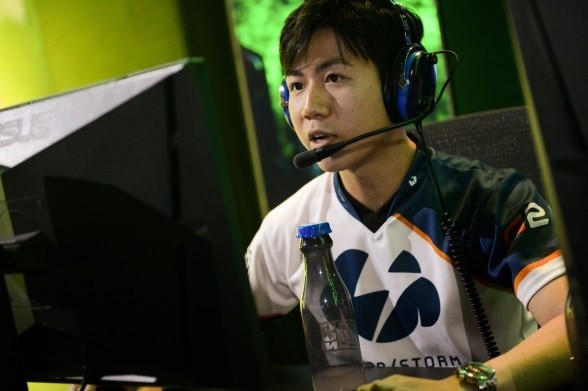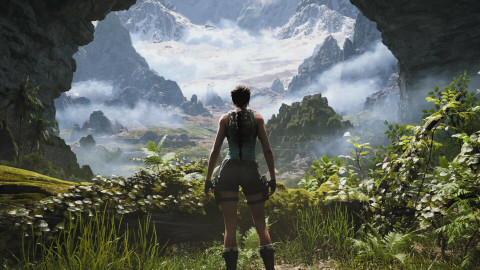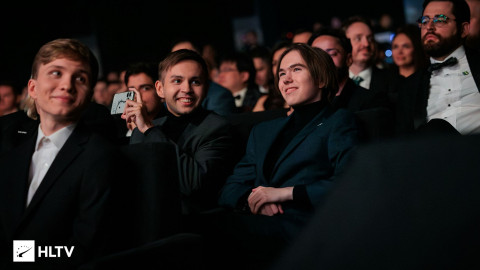This past weekend, nearly 40 pro arena teams across North America and Europe went head-to-head in the first Fall Cup of the Arena World Championship (AWC) series. Method Orange and Method Black ultimately came out on top in NA and EU, respectively, but in the eyes of many pros and fans, the tournament was irrevocably marred by the widespread use of over-tuned PvE tank trinkets, the stacking of defensive Azerite traits, and the blatantly poor balancing of certain specializations.
Now, a round of major PvP balance changes is on the horizon, many of the alterations a direct response to the glaring issues exposed during those three days of competition. On Monday, September 24th, a series of highly anticipated adjustments to Druids, Shamans, Hunters, and more will go live, with changes to Warlock and Death Knight specs promised in the near-future.
Although many of the changes are both unsurprising to and generally well-received by the pro community, the consensus on arena remains one of dissatisfaction. There is another BlizzCon-qualifying tournament this weekend; several game-defining problems remain unsolved; and, there is a long way to go before 3v3 arena is in a healthy state.

The upcoming patch consists primarily of nerfs to specializations the competitive community commonly agrees are disproportionately strong, as opposed to buffs to the disproportionately weak. For example, Restoration Druids are to receive a flat 10% reduction in healing when engaged in PvP combat, and Grove Trending and Focused Growth, two Azerite traits, will be noticeably weaker. The effective healing of hybrid specs like Feral and Balance will also be significantly reduced.
Similarly, Restoration Shamans received substantial nerfs to both Spirit Link (a PvP talent that replaces Spirit Link Totem with an instant cast healing increase and damage redistribution buff) and Surging Tides, an Azerite trait that gives Riptide an absorb. Riptide healing will also be reduced by 15% in PvP combat and Rippling Waters, a PvP talent that automatically heals a target when Riptide is refreshed, dispelled, or its duration ends, is receiving a 33% healing reduction nerf.
"...some of the competitive community remains disgruntled with Blizzard’s
underlying balance philosophy: the weak, players argue,
should be buffed before the strong are nerfed,"
These changes were to be expected -- of the eight total NA and EU teams that progressed to the final brackets in last weekend’s Fall Cups, only one team played anything other than a Shaman or Druid healer (and they lost 0-3). Shamans and Druids have traditionally dominated arena healing thanks to their utility and effectiveness even in deep Dampening, and their staying power was more relevant than ever in the face of the longest arena games in recent history.
Only nine of the 17 maps played across the four series of the European final bracket ended below 50% Dampening and only three games ended below 30% (with one of them being something of a fluke). A map of the Grand Finals between XRB to the Moon and Method Black finished at a record-breaking 69% Dampening.

Although the prevalence of Xalzaix’s Veiled Eye did contribute to the length of tournament games, as Andreas "Raiku" Meaney of Method Black pointed out, match-ups between Resto Druids and Shamans on live (where tank trinkets are not being used) still run 10-15 minutes long.
“Big changes. Druid [and] shaman nerfed is going to make games not go into dampening nearly as often,” said Chuck “Cdew” Dewland, a pro healer for Method Orange, regarding the upcoming patch.
The sentiment was echoed by others in the community, including The Gosu Crew’s Resto Shaman Carlos “Absterge” Correa and arena commentator Mohammed “Ziqo” Beshir. “Druid and shaman healing [is] too high, too mana efficient, [and] consistent damage [is] too low,” said Ziqo regarding the underlying problem with 3v3 arena pacing.
And so significant nerfs to Resto Shamans and Druids, as well as Feral and Balance hybrid healing, are generally praised for the sake of improving the pacing of matches. Arena, after all, is all about pacing, with the quality of 3v3 most often discussed in terms of tempo: games should not be so short that strategy cannot play out, nor so long that the majority of playtime is dead weight.
"For so long in the game, [Method Black] are essentially doing nothing. They're just snaring them and running away, waiting for Dampening,” said commentator Elliott “Venruki” Venczel of the dominant RMD (rogue/mage/resto druid) team during the Fall Cup.
And, well… “waiting for Dampening” is not particularly exciting for players or viewers.
But while a few nerfs were inevitable, some of the competitive community remains disgruntled with Blizzard’s underlying balance philosophy: the weak, players argue, should be buffed before the strong are nerfed.

“[This patch has] some great changes to bring things in line, but more than anything I hope that they don't overnerf the ‘OP.’ Keeping arena fast paced and exciting is crucial for replayability and enjoyment,” said Adam “Chanimal” Chan, a World of Warcraft veteran known for his Warlock play. “I would also like to see more emphasis on addressing the weaker classes sooner.”
No significant buffs to damage specializations are coming in Monday’s patch, but six are scheduled for nerfs (Feral, Beast Mastery, Survival, Unholy, Arms, and Elemental). Again, several of these changes were anticipated -- sorry, Ferals, say goodbye to outlandishly powerful Ferocious Bites -- but because not all powerful DPS specs were knocked down a peg and zero decidedly weaker specs were bumped up a tier, numerous pros feel their viable composition choices will shrink, rather than expand, come Monday.
In particular, Rogues and Mages are expected to be, as Cdew put it, “insanely good.” No changes to Frost Mage snares have been announced despite widespread critique of their current state, and Assassination Rogues have slid under the radar. Demon Hunters, whose outrageous damage output took center stage last weekend, will remain untouched.
“I don’t even mind getting nerfed AGAIN, if some of the clearly broken classes get touched upon as well,” said Nick “Smexxin” DalSoglio, a pro Warrior, before clarifying that Demon Hunters, Rogues, and Mages deserve a double-take from Blizzard. “[I’m] just worried games are going to be completely one-sided when in a comp with one of these.”
"...I'm really not enjoying 3s. Class design ... is pretty terrible from a PvP
perspective and that's really ruining the experience for me,"
For Chanimal, Monday’s patch means a continuation of the waiting game he has played since Battle for Azeroth launched. Warlocks are, thus far, laughably bad in PvP and the promised adjustments are unlikely to hit before the next Fall Cup.
“Battle for Azeroth Affliction design revolves around casting a lot of [Unstable Afflictions] and using them to burst with Deathbolt. When left free to cast, Affliction does great damage. However, we have a few key weaknesses which are crippling: no damage reduction, weak mobility, [and] low crowd control (Fear and Shadowfury [are] both casted, and Fear ooms us),” explained Chanimal. “We only have one strength in our damage, which we never find an opportunity to even take advantage of because of [our] weaknesses.”
He continued: “In the future, I would love to see the readdition of old pruned abilities such as Shadowflame (for the slow), Curse of Exhaustion, baseline Coil or Howl of Terror to help ourselves rather than relying on teammates every game. More importantly, some damage reduction -- [maybe] more armor -- would be necessary for Warlocks to be viable in the current state.”

Regardless of the various Band-Aids Monday’s patch provides, many of arena's problems are rooted in Battle for Azeroth's Azerite armor system. Azerite traits remain as convoluted, frustrating, and exploitable in PvP as they are in PvE; fully unlocked defensive traits and general trait stacking proved nuisances during the first Fall Cup. While the upcoming patch addresses problems with a handful of specific traits, the Azerite system remains deeply flawed.
“On live, the majority of players haven't gotten their [Heart of Azeroth] neck levels high enough to unlock all defensive traits. Once we get to that point, I'm sure we'll see more people abuse triple trait stacking, meaning they'll be virtually unkillable and once again [force] long Dampening games,” said Chanimal.
Concerns regarding the Azerite system, defensive traits, and trait stacking in PvP have been voiced by everyone from average players to pros to casters, but as with all things related to Azerite, there is not much to be done.
Game designers simply acknowledge that the system is not working as intended and promise that change is coming. For pro players looking to punch their tickets to BlizzCon, however, change cannot come soon enough.
“The pace [of arena] at the start of the season was incredibly fun. If they could maintain that, with some constant tuning it would be much more enjoyable,” said Chanimal. “Right now though, I'm really not enjoying 3s. Class design, for the most part, is pretty terrible from a PvP perspective and that's really ruining the experience for me.”
Sort by:
Comments :1
-
0

level 1 Hatem_Hammad
I see little mention of Dks, we’re on similar if not worse place than warlocks atm.






